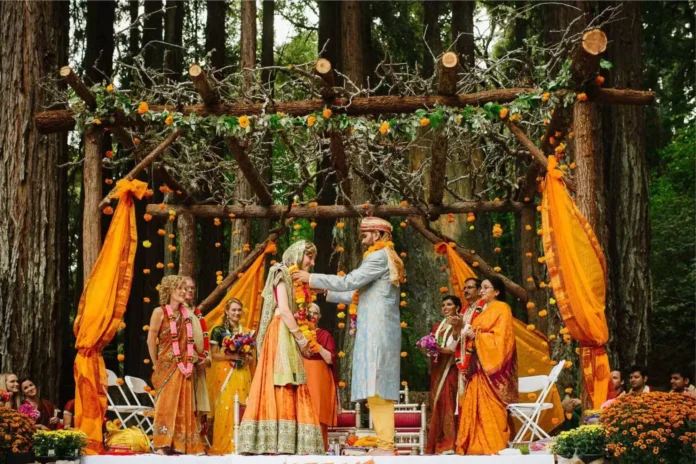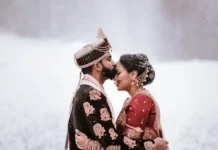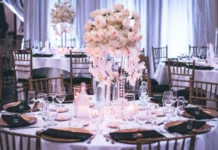Unfolding the deeper meaning behind every wedding ritual—From Roka to Mangalsutra, each event holds centuries-old sacred wedding traditions and celebrations
Weddings in every part of the world tell a different kind of story of love, trust, and promises made between the two who want to spend their whole life with each other. Indian weddings, being the most popular for its centuries-old traditions and rituals, are more than just a celebration. It isn’t just any day, but a soulful journey that unfolds with the rituals. Every wedding tradition symbolises something and is full of warmth, love, promises, meaning, and connections.
From first shy glances during Roka to holding hands in front of everyone during Pheras, It’s more than just a wedding celebration.
Let’s step closer to discovering the deeper symbolism behind some of the most cherished wedding traditions. This guide will help you know what these rituals actually mean behind the band and baarat.
Roka: The First Seal of Reunion
It all starts quietly! Roka is the very first ritual in an Indian wedding, which is a promise between the families of the couple. In this, both the families do Tilak of the couple, feed them sweets for a pleasant starting, and give them shagun. This tradition symbolises the consent, commitment, and blessing of the elder members in both the groom’s and bride’s families that the couple is now officially reserved for each other.
Read also: Ananya Panday-Inspired Outfits for Your Roka
Sagai: The Starting of an Eternal Bond
After the Roka, follows the engagement, also known as ‘Mangni’. Here the couple exchange rings in front of their close ones and finally ‘seal the deal’. It isn’t just about sharing the precious stones, but it symbolises the start of infinity, an unbreakable bond, endless love, and shared dreams of the couple. If we dive deeper into this wedding tradition, you’ll discover that the placement of the ring on the fourth finger is believed to have veins connecting directly to the heart.
Haldi: For the Golden Glow
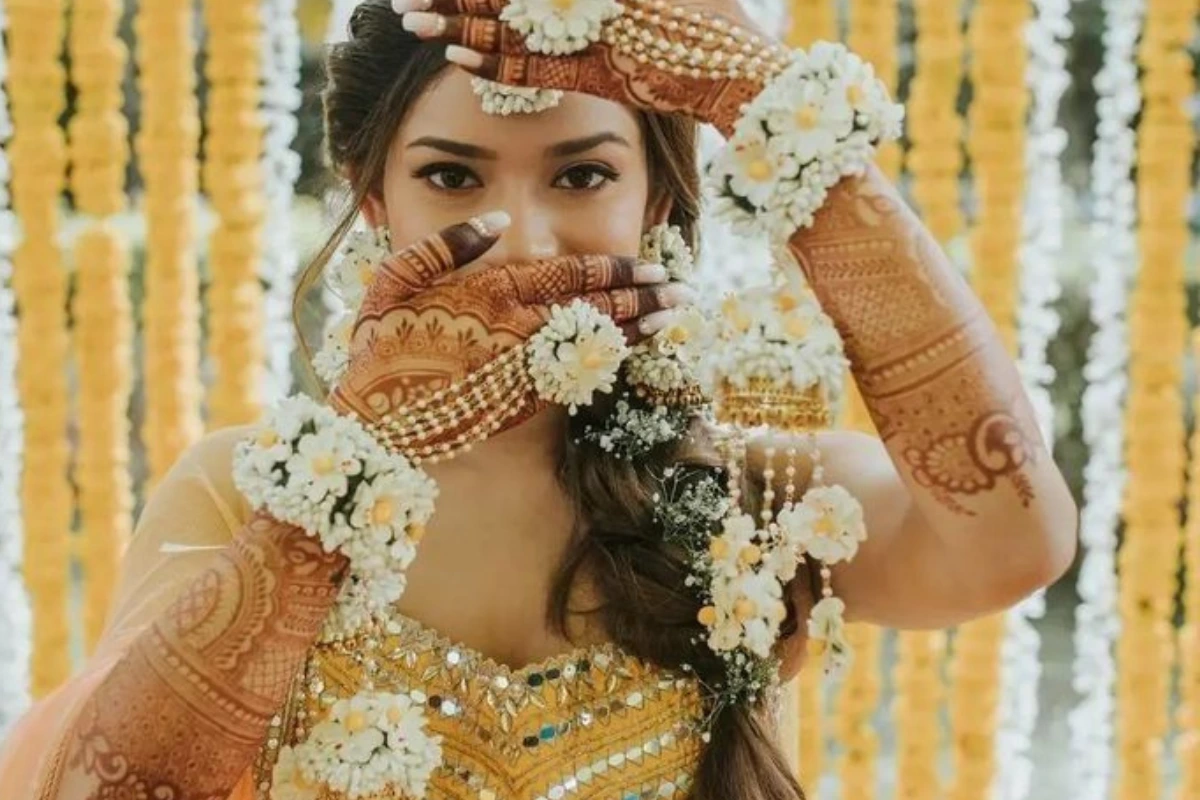
Haldi is one of the most loved traditions in an Indian wedding also known as ‘Ubtan’ in many states in India. In this, the mixture of haldi with mustard oil and curd is rubbed on the body of the bride and groom, symbolising the purification of soul, wearing off the evil eye, and adding a natural glow. Little teasing and jokes are part of this ceremony, making it even more memorable.
Mehendi: The Hidden Name Game
Widely known as the Henna ceremony, it is one of the most loved wedding traditions by the bride. In this ceremony, the bride applies Mehendi on her hands and feet. She wears dark coloured outfits like Rani Pink, orange, or green—symbolising the colour of Mehendi. She hides the name of her husband in different patterns, which the groom later tries to find. And if the groom is successful he wins this cute, little and fun game.
Mehendi is supposed to have cooling properties, believed to give relief from headaches and tiredness to the bride. The ladies in the family perform and sing folk wedding songs playing the ‘Dholki’ teasing the groom and his family to make the evening more memorable. There’s even a playful belief; the darker the Mehendi, the more love a bride will get from the groom and her Mother-in-law.
Sangeet: The Dancing Night

And now the most happening event of the wedding: the Sangeet ceremony. Here the whole community dances their heart out to the music. The word Sangeet literally means “music”. But over the years, this event has evolved into a full-fledged evening of dance performances, laughter, bonding, and spectacular entertainment.
Baraat: The Arrival of the Groom
Baraat is one of the most energetic and joyous moments in an Indian wedding. It is the groom’s wedding procession, his last walk as a bachelor, where he arrives at the bride’s venue surrounded by his family and friends, dancing to dhol beats. In essence, the Baraat symbolises the groom’s journey to the future; to his bride-to-be.
Tilak: The Welcome
As the groom arrives in his grand Baraat, he is welcomed with love and open arms by the bride’s family. In this wedding tradition, the mother of the bride applies Tilak on the groom’s forehead, symbolising the welcome into the family. After the Tilak, a fun ribbon-cutting ceremony happens, where the brides’ sisters do the Aarti of the groom and a ribbon is tied across the entrance, and the groom is only allowed inside after he “cuts” it, usually after giving a small gift or negotiation to the bride’s sisters and cousins.
Varmala: The Reunion
The Varmala, also known as ‘Jaimala’, is the first ceremony between the bride and the groom. Here, the couple puts the Jaimala around each other’s neck, symbolising the breaking of ego and acceptance of equality.
The different flowers in the garland (Varmala) represent fragrance and the blossoming of a new relationship. Tradition has it, whoever puts the varmala first gets to ‘rule’ the relationship after the wedding!
Kanyadaan: A Father Giving His Heart
One of the most emotional wedding traditions in Indian weddings is known to be the Kanyadaan, also widely recognised as the highest charity in the universe. It symbolizes the giving away of the bride by her parents to the groom. The word “Kanyadaan” comes from ‘Kanya’, meaning daughter and ‘Daan’, meaning donation; together, it signifies the highest form of charity a parent can offer. The father of the bride applies haldi paste on the hands of the bride and then handles it to the groom’s hand, symbolising the responsibility to take care of their daughter from that very moment.
Pheras: The 7 Sacred Promises
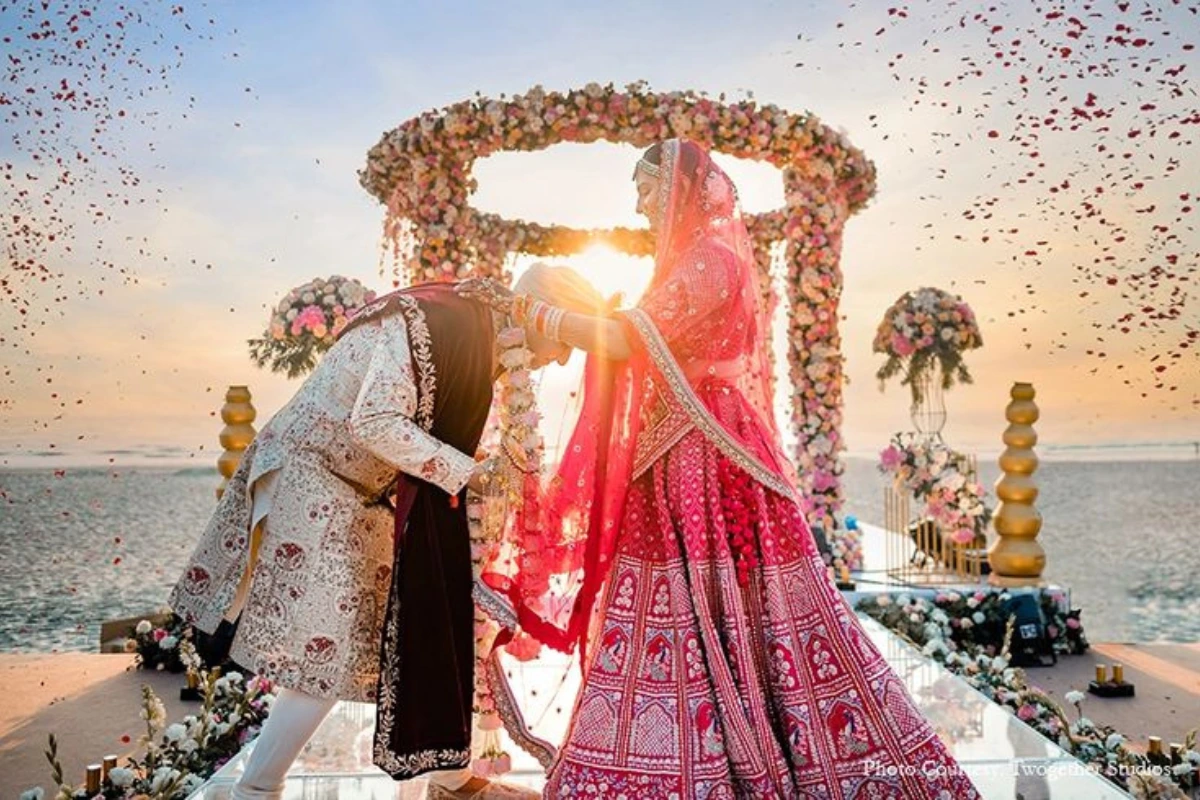
“The Pheras” are the heart of the wedding. The couple walks around the holy agni where the bride usually leads the first four rounds, symbolising her commitment, while the groom leads the final three, reflecting his promise to protect and support. With each Phera the couple promises to respect each other and their families, support each other through life’s every decision, and protect each other in any given situation, along with various other vows.
Read also: The Meaning Behind Hindu Pheras
Mangalsutra: Thread of Protection
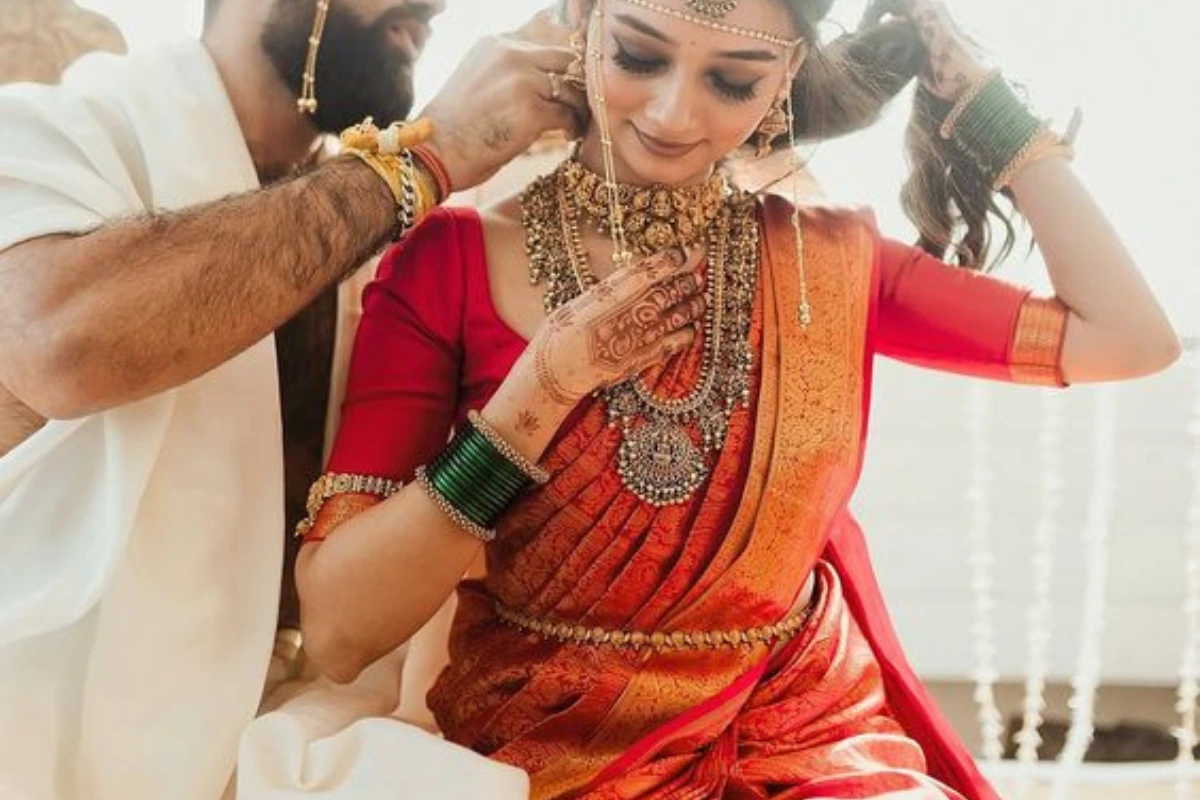
Mangalsutra is not just any thread; it is a powerful symbol of protection and commitment between the couple. It’s tied with three knots, representing devotion, loyalty, and a strong bond between the couple. After marriage, Mangalsutra is worn by the bride daily which is not just any marital status, but it symbolises the unbreakable connection between her and her partner.
Sindoor: Declaration of Commitment
The Sindoor is applied to the bride’s hair parting (maang) with red vermilion powder where the groom symbolically blesses her with long life, prosperity, and protection. Traditionally, this act also signifies the groom’s acceptance of the bride as his partner and companion for life. The red colour of the Sindoor also represents love and Shakti.
Vidaai: A bittersweet Goodbye
Vidaai is one of the most emotional wedding traditions where the bride bids farewell to her childhood home and family, leaving everything behind that she nurtured from the beginning and enters into a different phase of her life. As she steps out of her home, it symbolises her transition from daughter to wife and from one family to another.
Read also: Newlyweds, Avoid These Common Mistakes at All Costs
These wedding traditions are not just customs passed down from generation to generation, but behind every ritual there’s love, loyalty, vow, commitment, hope, and respect above all.

